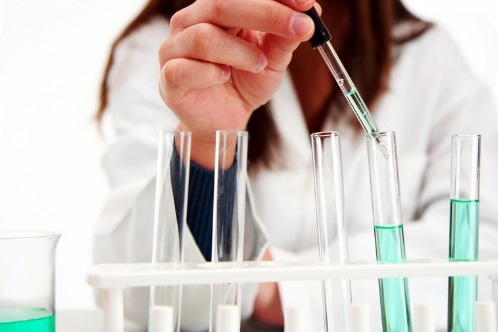Clean Water Fund: Contaminants of Emerging Concern (CEC)
MDH Legacy Initiatives
- Clean Water Fund Home
- Contaminants of
Emerging Concern - Groundwater Protection Initiative - Accelerated Implementation Grant
- Groundwater Restoration and Protection Strategies (GRAPS)
- Pathogen Project
- Private Well Protection
- Source Water Protection Planning and Grants
- Water Reuse
Related Topics
Environmental Health Division
Analytical Methodology Development
Project background

Thousands of chemicals are used in industrial and commercial products. Use of these products results in the release of chemicals into the environment, including surface water and groundwater. In recent years, limited monitoring by federal and state agencies have reported a wide range of contaminants in Minnesota surface water and groundwater. Many of these chemicals are categorized as contaminants of emerging concern (CECs). CECs are contaminants that have new or changing health or exposure information, pose a real or perceived health threat, or don’t have health based guidelines. The Minnesota Department of Health (MDH) evaluates contaminants found in water and creates health-based guidelines. Health-based guidelines tell us at what level a contaminant can be in drinking water and be unlikely to cause harm or illness. Although we are aware of some specific CECs in water, there may be more in water that we don’t know about because we don’t have an analytical method to detect them. CEC program staff at MDH started working closely with the Public Health Laboratory (PHL) to identify CECs that are likely to end up in water and to develop analytical methods for each identified contaminant. Once an analytical method is developed, we are able to learn more about which CECs are present in Minnesota waters, and at what levels.
Project details
If it is determined that a contaminant is likely to end up in water at levels that may be a health concern, CEC program staff work with PHL staff to determine if an analytical method can be developed for that contaminant. If analytical method development is possible, PHL chemists will try to create one. Occasionally a method cannot be developed with the current technology.
Acrylamide is a good example of a recent contaminant for which this process was successful. Acrylamide was identified as a contaminant that should be monitored in water; however, no method existed to extract it from water. The PHL was able to successfully create an extraction method. This method is now used to monitor water for acrylamide.
Project applications
With this project, the Public Health Laboratory and CEC program will:
- Develop new methods to detect and analyze CECs that currently cannot be monitored in water.
- Identify which CECs are top priority for analytical method development.
- Share knowledge of CEC analysis and detection with the wider scientific community and the public.
Sharing the Science
MDH has shared the advancements made through this work with the wider scientific community. For more information, see: Journal article on the analytical methods development project.
